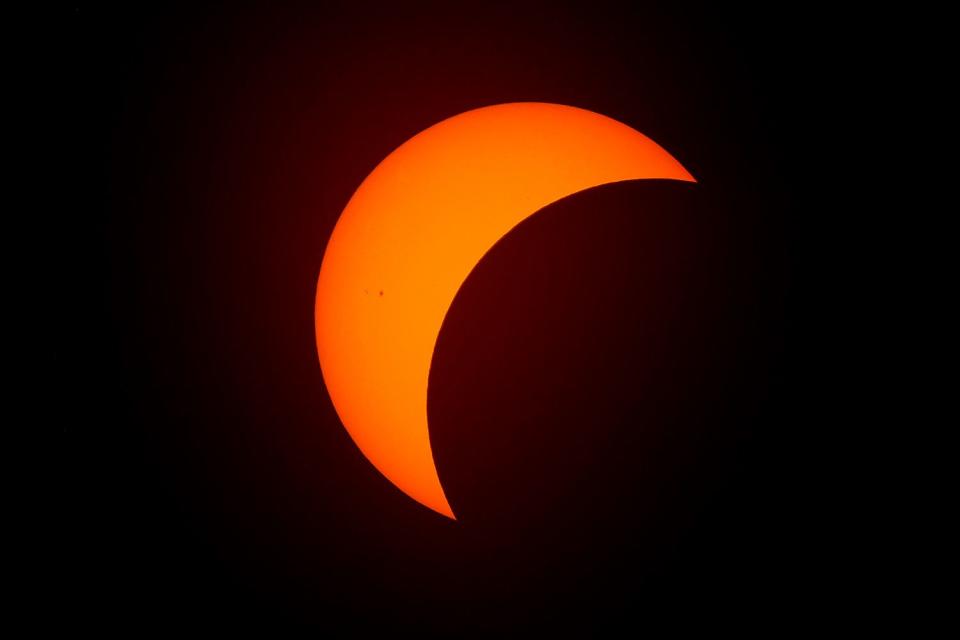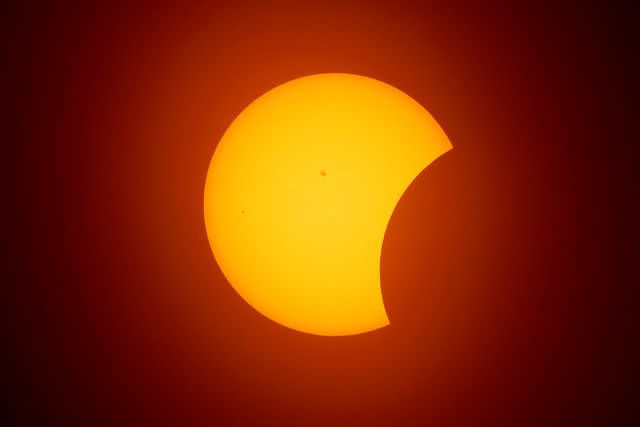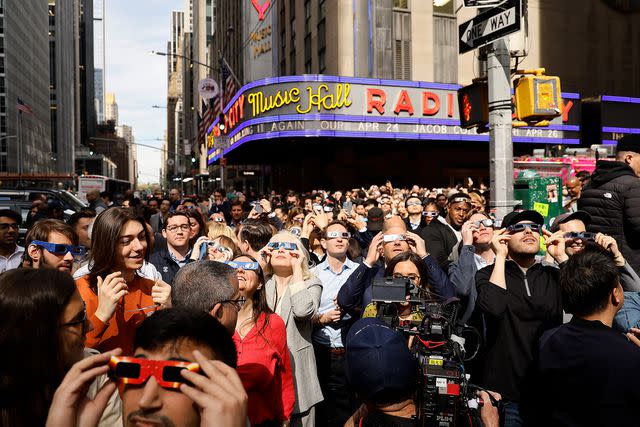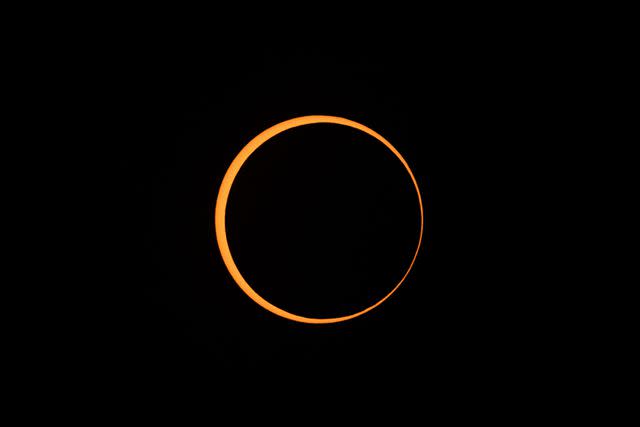When Is the Next Solar Eclipse in the United States? All About Its Rare Visibility from Earth
Here's when the next total solar eclipse will be visible from the United States, including the cities in its path of totality

Ron Jenkins/Getty
The moon begins to eclipse the sun in Texas on April 8, 2024.The moon came, it eclipsed and went on its way.
Since the rare total solar eclipse occurred on April 8, people are eager to know when the extraterrestrial event will be visible from the United States again.
While many are calling the space phenomenon a "once-in-a-lifetime event," solar eclipses technically occur every year, however, it's the eclipse's visibility from specific parts of our earth and its degree of totality that makes it particularly rare.
"Even though somewhere on Earth will experience a total solar eclipse approximately every 18 months or so, due to the narrow path of totality, they are very rare for any one specific location," according to BBC's Science Focus.
Related: How the Total Solar Eclipse Will Affect Your Mood, Based on Your Zodiac Sign
The 2024 solar eclipse was especially rare because it was visible in the contiguous United States, despite only 15 states being in the path of totality. Among them were Oklahoma, Illinois, Ohio, Pennsylvania, New York, Vermont, New Hampshire and Maine before heading northward into Canada.
"To have a total solar eclipse that covers so much of a populated landmass, regardless of the location, is quite spectacular," per BBC's Science Focus. The last time the U.S. experienced a similar solar eclipse was in 2017 — and prior to that, it had been over one hundred years for the contiguous U.S.
It can take up to 400 years for some locations to have repeat solar eclipses. Fortunately, that's not the case for the United States.
Here's when the next solar eclipse will be visible from the U.S., including the states in its path of totality.
When is the next total solar eclipse?

Ron Jenkins/Getty
The solar eclipse is seen on April 8, 2024 in Fort Worth, Texas.The next total solar eclipse will take place on Aug. 12, 2026. According to NASA, it will be visible from Greenland, Iceland, Spain, Russia and a small area of Portugal.
However, North America will only be able to see a partial eclipse. Europe, Africa, the Atlantic Ocean, Arctic Ocean and Pacific Ocean will experience the same.
Use the total solar eclipse overseas as an excuse to travel! It will be an especially rare event for Iceland, which hasn't experienced a visible solar eclipse since 1954. (It will be the last one until June 26, 2196!)
When is the next total solar eclipse visible in the United States?

John Lamparski/Getty
People wear glasses to see the solar eclipse in N.Y.C. on April 8, 2024.The next total solar eclipse that will be visible from the United States will be in northwest Alaska on March 30, 2033 (Eastern Russia will have a view, too).
As for the 48 contiguous states, the next solar eclipse will occur on Aug. 23, 2044. Less states will be in its path of totality in comparison to the 2024 solar eclipse.
The states that will experience a totality in 2044 include Montana, North Dakota and far northwest South Dakota at sunset. Other locations on its path of totality include the high Arctic, Greenland, Nunavut, the Northwest Territories and parts of Canada.
When is the next eclipse?

Rick Kern/Getty
A "ring of fire" annular solar eclipse is seen in Boerne, Texas in October 2023.A total solar eclipse is just one of the three different types of eclipses that can occur. The others include partial eclipses and annular solar eclipses, all of which are distinct from each other.
A partial solar eclipse is when the moon comes in front of the sun, blocking only some of the light from its surface. Simply put, the alignment of the moon and the sun and the observer on Earth is not perfect.
An annular solar eclipse occurs when the moon and the sun are aligned, but the moon is further away in the orbit. Therefore, the moon's disk doesn't perfectly cover the sun's disk resulting in a "ring of fire" appearance in the sky.
Lastly, a total solar eclipse — like the one that took place on April 8 in the U.S. — happens when the moon aligns with the sun blocking out its light completely. This occurs because the moon and the sun are close enough in orbit, causing a dramatic darkening in the sky from parts of the Earth.
The next eclipse to occur is an annual solar eclipse on Oct. 2, 2024. It will be visible in South America, though a partial eclipse will be visible in areas of North America.
For more People news, make sure to sign up for our newsletter!
Read the original article on People.

